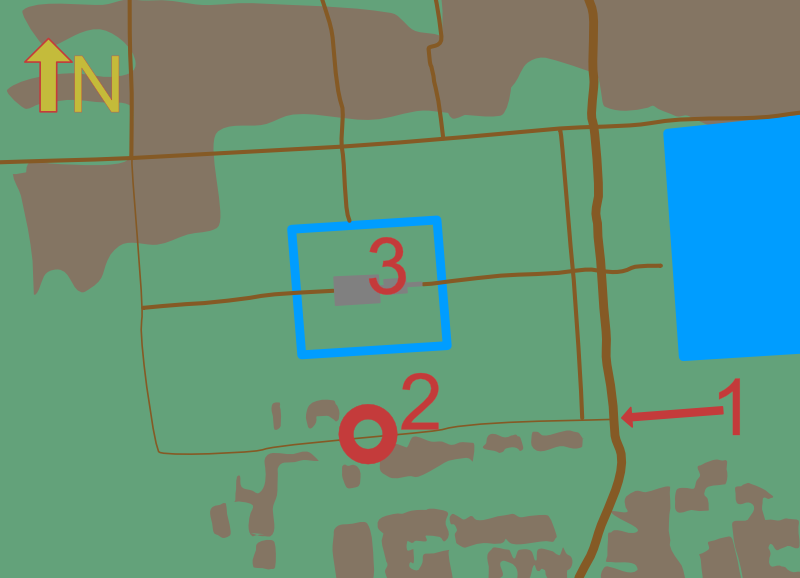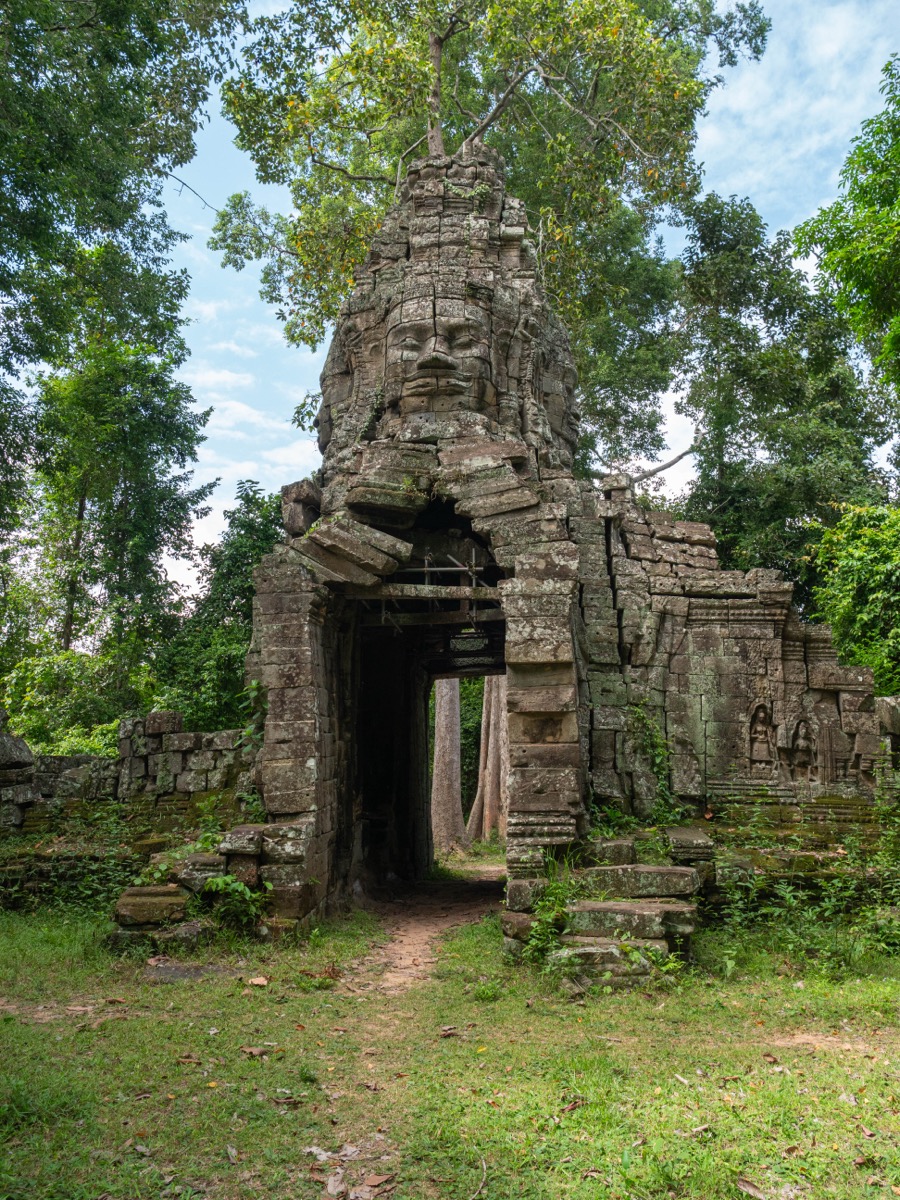Visiting this site strays slightly from the classic paths. The easiest way is to go with a guide and by bike.
BEWARE of crab-eating macaques!
The South Gate of Banteay Kdei is one of the entrances to the Banteay Kdei temple, a historical site in Cambodia.
It is accessed via a forest path that is not clearly marked. We arrived by bike. Suddenly, this gate appeared before us—majestic.
We came from the south via the road, then turned left onto a path that led us through the forest.
A discreet entrance to a retreat temple
The Banteay Kdei temple, meaning “Citadel of the Cells,” was built under the reign of Jayavarman VII (late 12th century), in a style similar to that of Ta Prohm. Less visited than other major Angkor temples, it likely housed a community of Buddhist monks.
The South Gate
The South Gate is one of the calmest and least visited entrances to the complex. Set back from classic tourist routes, it offers a peaceful entryway, often lined with ancient trees and frequented by birds or meditating monks.
Architectural features
Like other temple gates built under Jayavarman VII, the South Gate of Banteay Kdei reflects Mahayana Buddhist architecture and compassionate iconography.
- Monumental faces facing the four cardinal directions, likely representing Lokeshvara (Avalokiteshvara), the bodhisattva of compassion.
- Access bridge crossing an old moat, with remnants of naga balustrades.
- Materials: sandstone and laterite, typical of the Bayon period.
- Modest dimensions, yet harmoniously proportioned.
The gate reflects a pursuit of spiritual balance and symbolism more than military or political might.
A symbolically rich gate
Oriented to the south, this gate may have symbolized:
- The path of wisdom and spiritual retreat.
- A secondary entrance reserved for resident monks or contemplative visitors.
- A symbolic transition between the outside world and the sacred temple space.
Atmosphere and surroundings
The calm surrounding this gate contrasts with the hustle of Angkor Vat or Bayon. Here one often hears:
- The song of cicadas.
- The crack of twigs beneath a monk’s step.
- The gentle rustle of the wind in the trees.
It is an ideal place to feel the harmony between Khmer architecture and tropical nature.
Conclusion
The South Gate of Banteay Kdei is a discreet yet profound entry into the Khmer spiritual world. It does not seek to impress, but rather to welcome in silence. For the attentive traveler, it offers a rare experience: an intimate encounter with history and inner peace, the very essence Jayavarman VII sought to instill through his sanctuaries.
Here’s how to get there:



